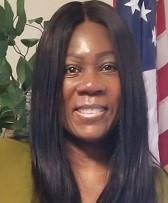Improving Instructional Efficacy across the Curriculum through Peer-to-Peer Observations
By: Dr.
Lena McArthur, Vice Principal, Booker T. Washington Senior High School
Now, what should be done to
augment teacher instructional effectiveness while improving academic success?
As we are aware, the past three years have been an encumbrance of social and
emotional instabilities which have played an integral role on the emotional
apparatuses of our psyches. Juggling these issues relates to “fried eggs.” How
can we effectively see ourselves clearly, let alone our students? What worked? Teacher
observations and immediate feedback is important. But this is the same
mechanism that has been used for years.
This is what I tried. I took a
process that was utilized by the school district and created a teacher version
called instructional peer-to-peer observations (schoolwide). Teachers
evaluating teachers in an environment that is not scary or an “I got you.”
Teachers in the Math department visited teachers in the English department.
English teachers observed Science teachers, CTE teachers visited Reading
teachers, and the correlation continued. Teachers were provided a note-taking,
note-making form to jot down observational information to discuss. As teachers
walked up and down the stairs, it was amazing how many of them stated that they
never even visited a particular section of the building/school. Also, teachers
were astonished with how their peers utilized various systems for an encouraging
learning environment, interactive anchor charts, student engagement techniques,
teacher proximity, the use of data progress trackers, checks for understanding,
and so much more. Their lights began to shine all over the school. Chatter emerged
as the dominant factor and teachers wanted more observational experiences.
Next, teachers met to dialogue about their encounters
as well as what they will adapt in their classrooms. The discussion was eye
opening. Math teachers realized they did not have a print rich environment; CTE
teachers talked about instructional
configurations and how they can use a little of each department in their
lesson…...cross-curricula alignment…YES! This is exactly what administration
was looking for. Math teachers saw extensive accountable talk in English
classes. One teacher stated, “Oh, I see what they mean about releasing my
students a little more; I thought I was doing it correctly, but I see the strategy
that the teacher used to get students to talk more, she really was the
facilitator and the students taught each other.” After the focus group, administration walked
the classrooms with the curriculum coaches and a survey was administered. The
results were phenomenal. 87% of the instructional staff changed, updated, or
recreated to some degree, their instructional efficacy. Classroom environments
and student accountability upsurged, and teachers begin to forge forward in
teams to continue the peer-to-peer process within their departments.
We continuously talk about change;
but what are we going to do to revolutionize this process? Teachers are
observed, given feedback, and supplied with a list of grows and glows
from administration. However, when instructors go through the same process
amongst their peers, the practice flows a lot easier, creating an environment
of opulence and cultural fortitude for ALL. For follow up questions and resources,
please email me at lmcarthur29@hotmail.com.




Comments
Post a Comment